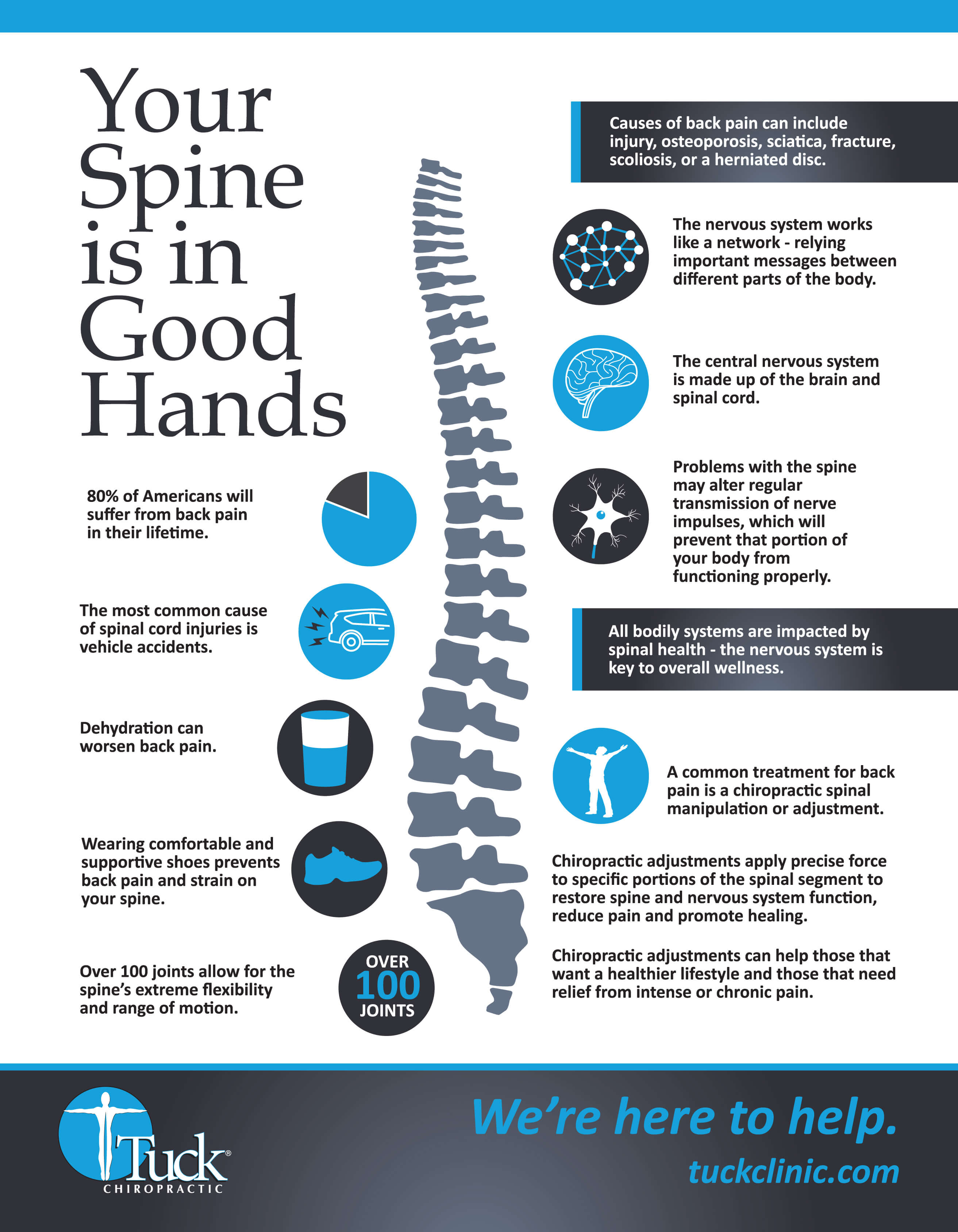The Impact Of Posture On Back Pain: Guidelines For Keeping Great Positioning Throughout Your Everyday Regular
The Impact Of Posture On Back Pain: Guidelines For Keeping Great Positioning Throughout Your Everyday Regular
Blog Article
Developed By-Kragh Fraser
Keeping appropriate posture isn't practically staying up right; it has to do with aligning your body in a way that sustains your spine and decreases the risk of pain in the back. The method you sit, stand, and relocate throughout the day can substantially influence your spine wellness. Yet how specifically can you ensure good alignment regularly, also throughout hectic days filled with various tasks? Allow's dig deeper right into the refined yet impactful changes you can make to your everyday routine to keep your back delighted and healthy and balanced.
Value of Proper Stance
Appropriate posture is crucial in keeping a healthy and balanced back and stopping pain. When you rest or stand with good stance, your back remains in positioning, minimizing pressure on your muscle mass, ligaments, and joints. This placement permits the body to disperse weight uniformly, stopping too much tension on certain areas that can bring about pain and discomfort. By keeping your spine properly straightened, you can also improve your breathing and food digestion, as slouching can compress body organs and restrict their performance.
In chinatown therapist , keeping excellent stance can enhance your total look and self-confidence. When dr schram stand tall with your shoulders back and head held high, you exude self-confidence and appear more friendly. Great stance can additionally make you feel a lot more stimulated and alert, as it promotes proper blood flow and enables your muscle mass to work successfully.
Integrating appropriate position into your daily routine, whether resting at a workdesk, walking, or working out, is essential for avoiding back pain and advertising general well-being. Bear in mind, a small change in how you hold on your own can make a significant difference in just how you feel and work throughout the day.
Common Postural Mistakes
When it pertains to maintaining good position, lots of people unconsciously make usual blunders that can add to back pain and pain. One of one of the most widespread mistakes is slumping over or stooping over while resting or standing. This setting places extreme pressure on the spine and can lead to muscular tissue discrepancies and discomfort in the future.
One more usual error is overarching the reduced back, which can squash the all-natural contour of the back and trigger pain. Additionally, crossing legs while sitting may really feel comfortable, yet it can produce an inequality in the hips and pelvis, bring about postural issues.
Making use of a pillow that's also soft or also strong while sleeping can additionally impact your positioning and contribute to pain in the back. Finally, continuously craning https://doctor.ndtv.com/living-healthy/sciatica-all-you-need-to-know-about-sciatic-nerve-pain-1886281 to check out screens or readjusting your position frequently can stress the neck and shoulders. Bearing in mind these typical postural blunders can aid you maintain much better alignment and minimize the threat of back pain.
Tips for Correcting Placement
To improve your positioning and lower pain in the back, it's vital to concentrate on making small adjustments throughout your everyday regimen. Begin by bearing in mind your pose. When resting, guarantee your feet are level on the floor, your back is straight, and your shoulders are relaxed. Avoid slouching or leaning to one side. Use ergonomic chairs or pillows to support your lower back.
When standing, disperse your weight equally on both feet, keep your knees a little curved, and embed your hips. Involve your core muscle mass to sustain your spine. Take breaks to stretch and walk if you have a less active job. Integrate exercises that strengthen your core and back muscle mass, such as planks or bridges.
While resting, utilize a pillow that sustains the all-natural contour of your neck to maintain proper spinal alignment. Prevent sleeping on your tummy, as it can stress your neck and back. By being mindful of these ideas and making small adjustments, you can slowly correct your placement and reduce pain in the back.
Conclusion
Keep in mind, preserving great posture is key to stop pain in the back and promoting back health and wellness. By bearing in mind your placement, dispersing weight uniformly, and engaging your core muscle mass, you can lower pressure on your back and minimize the risk of pain and injury. Integrate ergonomic support, take normal breaks to extend, and reinforce your core and back muscles to preserve proper alignment throughout the day. Your back will certainly thank you for it!
